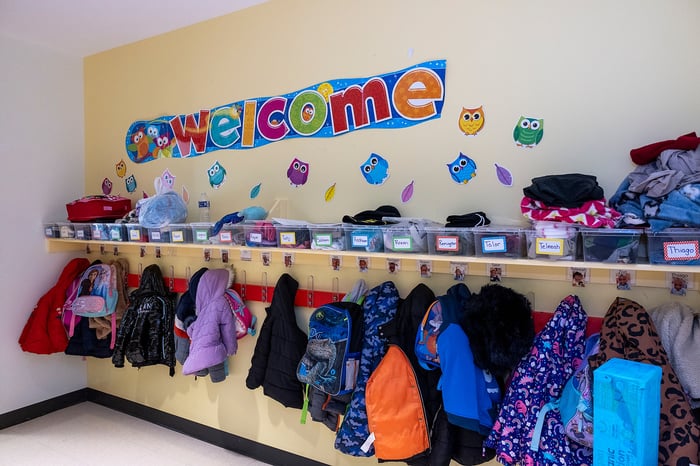An Administrator's Essential Guide for Establishing a Culture of Inclusion
Administrators • 5 min read • Aug 13, 2024 7:15:00 AM • Written by: Sarah Sandelius

Resource Alert! Scross down for two easy-to-use tools - Classroom Culture Plan and Administrator's Back-To-School Timeline.
* * *
Picture a classroom where every student starts the year feeling valued, engaged, and ready to learn. As a school leader, you can make this vision a reality – and the clock is ticking. With the new school year just around the corner, now is the critical moment to set the foundation for truly inclusive learning environments.
But here's the challenge: How do you ensure that inclusion isn't just a buzzword, but a living, breathing part of your school's culture from day one?
This isn't simply about accommodating students with disabilities – it's about enhancing the educational experience for every student in your care. In this blog, we'll explore why prioritizing inclusion from the very first day of school is not just beneficial, but essential for student success. We'll provide you with practical, immediately applicable strategies to support your teachers in creating intentionally inclusive classrooms.
The first days of school set the tone for the entire year. Are you prepared to make them count? Let's dive into how you can kickstart your most inclusive and impactful school year yet.

Why is Inclusion Important?
Inclusion in education is the process of creating learning environments where all students, regardless of their abilities or backgrounds, are fully engaged, supported, and valued. The benefits of such an environment are profound and supported by research.
Studies have shown that inclusive settings often see improved academic performance not only for students with disabilities but for all students (Szumski, Smogorzewska, & Karwowski, 2017). These environments foster greater social interaction and empathy among students, contributing to a healthier, more collaborative classroom culture (Schwab, 2015).
Moreover, inclusive education prepares students to function and thrive in a diverse world of abilities and backgrounds (Siperstein, Parker, Bardon, & Widaman, 2007). It cultivates an environment of understanding and acceptance among students and staff (Nowicki & Brown, 2013).
The Critical Role of Inclusion at the Start of the Year
The initial weeks of the school year present a critical window for establishing an inclusive environment that can shape the entire academic experience. By prioritizing inclusion from day one, school leaders set in motion a cascade of positive effects that ripple throughout the year.
Students who feel welcome and included from the start are more likely to attend school regularly, with early attendance patterns often predicting trends for the whole year. This consistent presence, coupled with a strong sense of belonging, correlates strongly with improved academic outcomes, particularly for students from minority groups or those with special needs.
Inclusive practices from the outset foster positive relationships among students and between students and teachers, laying the groundwork for a supportive learning environment. This early focus allows educators to quickly identify and address individual student needs, leading to more timely and effective interventions.
The norms and expectations established in these first few weeks tend to persist, defining the school culture for months to come. By emphasizing inclusion early on, school leaders not only enhance individual student experiences but also cultivate a more equitable, supportive, and successful learning environment for the entire school community.
Fostering an Inclusive School Culture
Creating an inclusive school culture requires a multifaceted approach that permeates every aspect of school life. At its core, this culture is built on the foundation of respect, empathy, and a shared commitment to meeting the needs of all learners.
Administrators play a crucial role in cultivating this environment by setting clear expectations, modeling inclusive behaviors, and providing the necessary resources and support. This includes fostering open communication channels between all stakeholders - teachers, students, families, and community members - to ensure diverse perspectives are heard and valued.
It's essential to create opportunities for meaningful interactions that celebrate diversity, such as school-wide events, inclusive classroom practices, and community outreach programs. Professional development should focus on equipping educators with the skills and knowledge to implement inclusive practices effectively, while also encouraging ongoing reflection and growth.
By consistently reinforcing that every individual has unique strengths and challenges that enrich the learning environment, administrators can nurture a school culture where inclusion is not just a policy, but a lived experience for all.
Administrators can systematically support inclusion through targeted professional development, equitable resource allocation, regular monitoring and feedback, family and community engagement, inclusive policy review, and celebration of successful inclusive strategies.
Empowering Teachers for Inclusive Planning..jpg?width=432&height=559&name=Specify%20who%20is%20responsible%20for%20each%20task%20(e.g.%2c%20teacher%2c%20support%20staff%2c%20administration)..jpg)
In addition to shaping schoolwide culture, administrators can guide teachers in creating inclusive classrooms from day one through targeted planning activities. Facilitating student experience mapping allows teachers to visualize and address the diverse needs of all learners throughout a typical school day. This process helps identify potential barriers and opportunities for inclusion.
Administrators should lead collaborative sessions where general and special educators share expertise to develop inclusive strategies. Encouraging teachers to set and communicate clear, inclusive expectations early on fosters a classroom culture of respect and belonging.
One resource that might be helpful is our Classroom Culture Plan. Download a copy to use with your teachers this fall.
By providing resources for differentiated instruction and promoting ongoing reflection, administrators equip teachers to create environments where every student can thrive.
Conclusion
Creating an inclusive school environment is an achievable goal that yields significant benefits. Start by implementing one or two strategies outlined above, such as collaborative planning sessions or inclusive classroom practices. These initial steps can lead to noticeable improvements in student engagement, attendance, and achievement.
As you progress, you'll find that inclusion becomes an integral part of your school's culture. Remember, each step you take, no matter how small, contributes to a more equitable and effective learning environment for all students. Your commitment to fostering inclusion will have a lasting impact on your school community. By taking action today, you're setting the foundation for a more inclusive and successful academic year.
Need another resource? Check out our back-to-school timeline.
world class special education starts with abc
Sarah Sandelius
Our Latest
Related Articles

July 12, 2021 | Culture of Inclusion
Top 3 Administrators “Need to Knows” to Maximize Student Outcomes
The Journey to Inclusive Learning. Discover strategies for disrupting root causes, advocating for al...

December 16, 2024 | Administrators
From Belief to Practice: 5 Mindsets That Make Inclusion Work
Transform special education in your school through 5 essential mindsets that drive inclusive practic...

September 4, 2024 | Administrators
Strategic Staffing in Special Education: Choosing the Right Model for Success
Discover three innovative special education staffing models to address teacher shortages and create ...


